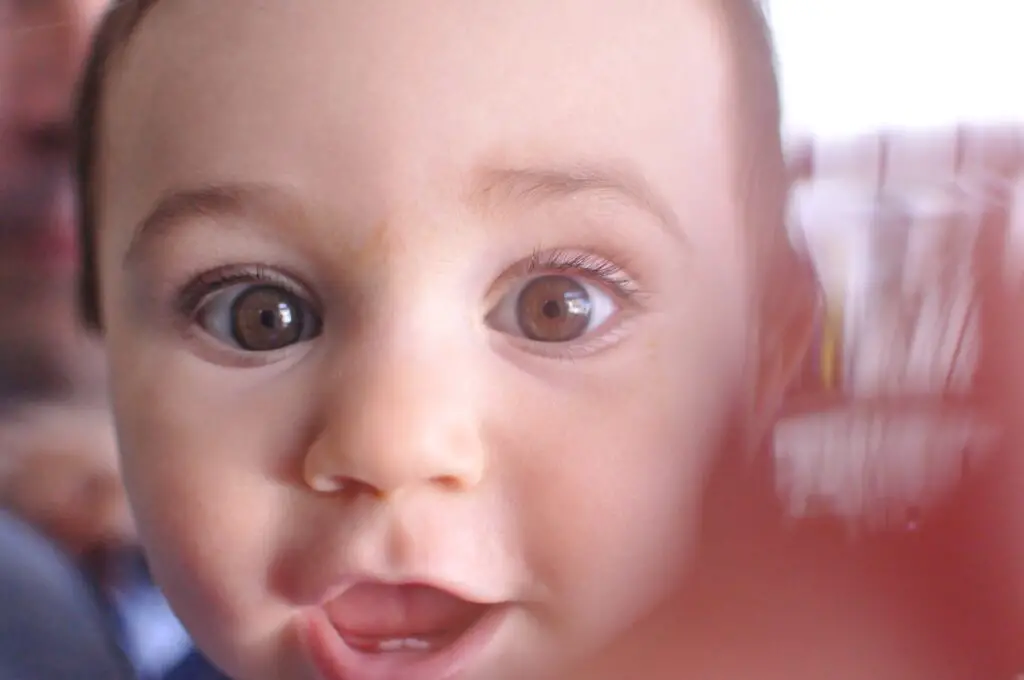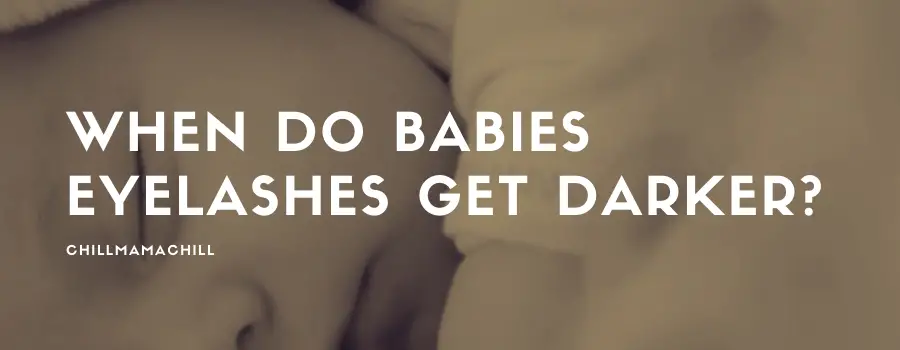Before giving birth to your baby, you often wondered how they’ll look like. You obsessed and had dreams about their skin, eye, or hair color, musing over whether they’ll take after you or your husband. But when do babies’ eyelashes get darker seeing as your tot was born with colorless wisps around their eyes?
Nothing showcases the miracle of life better than the way babies grow. Your baby is born with clear lashes, albeit almost invisible. These fall out after about three months to be replaced by darker colored lashes growing underneath. The scattered upper eyelashes will lengthen and darken before the lower ones, becoming more visible by the time your child is two.
While there’s no defined time limit for your baby’s eyelashes darkening, it’ll be complete within the first two years of life. All lashes, hair, and eyebrows start growing around the 20th week of pregnancy. Genetics and other predisposing factors determine the color change. Let’s look at when the culmination of this process will allow you to see how your kid’s face will look like for the rest of their life.
Was My Baby Born with Eyelashes?
For the protection and visual appeal of the eyes, eyelashes are essential elements that make a person’s face look like, well, a person. Their aesthetic capacity has even led to the invention of beauty products like mascara. There are also other products that promote longer and more luscious lashes. They’re also very sensitive, especially for newborn babies, and several factors will determine their presence, thickness, and color.

Every baby is unique, even siblings and multiples plus few people have different colors of eyelashes or eyebrows. Some babies are born bald, eyelash or eyebrow-less, while others appear with a head and face full of dark frizzy curls. Within the first 12 months, all hair, including lashes and brows will have attained its true color at its lifetime intensity.
Your baby started developing eyelashes somewhere after the 20th week of pregnancy, along with head hair, and eyebrows. They’re the first to appear, made up of keratin and water. However, hormonal imbalances during gestation can cause a baby to be born without lashes. Preemies born below the 35-week mark may have no hair whatsoever, taking longer to develop as they reach those milestones.
Eyelashes continue growing as your baby grows, but unlike hair, they fall out at around three-month intervals. A new strand will grow beneath the one that’s been shed, maintaining an almost equal number of upper and lower lashes for both eyes. Falling out faster or lacking replacement could indicate underlying problems, such as a disease called madarosis.
When They Darken, What Will Be the Color of My Baby’s Eyelashes?
The color of your baby’s lashes is similar to their hair, something that’s determined at the moment of conception. Genetic data stored in the sperm and egg contains 23 chromosomes that form a zygote, which is Greek for ‘joined.’ The microscopic beginning of your baby will have 46 chromosomal copies from both parents. Each will determine their sex, eye, hair, and other personal traits.
Your baby has about 100,000 genes in these 46 chromosomes, some of which are dominant while others are recessive. Some traits will be polygenic, meaning not derived from one gene. That makes the probability of foretelling your baby’s hair, or eyelash color a shot in the dark.

You see, when two genetic pools come together, experts believe that there’s a potential for producing 64 trillion different combinations of traits. That’s if they can have that many babies, which thankfully it’s possible.
Another factor impacting hair or eyelash color is pigmentation for your baby’s skin, eyes, lashes, brows, and hair. The pigment found in these is called melanin. It’s a substance categorized as eumelanin for black and brown tones and pheomelanin for red tones. While little is known about how each balances out. It’s thought that this distribution determines the eventual shade of your baby’s eyelashes.
How Important Is It for My Baby’s Eyelashes to Get Darker?
Eyelashes not only make your baby look beautiful, but they’re essential for the protection of their eyes. They prevent dust, debris, and other particles from coming into the eye, and are sensitive to stimulants like touch and wind, acting as an early warning system.

With eyelashes, your baby can also be able to shut out glaring light or reflections from sunshine and electric bulbs. That’s why lashed need to darken, since its pigmentation that blocks out UV rays and other sources of visible lighting. But apparently, their importance isn’t so much that your child can’t live without fully grown, darkened lashes.
You’ll notice that for almost a month or two, your tot’s eyes might be lash-less. As such, there are protective measures you can take to make sure your baby’s eyes are protected until they can fully develop. That includes;
- Keeping your environment clean and dust-free
- Not sweeping or dusting the room when your baby is present
- Reducing outdoor time, especially when the sunlight, wind, or pollen index is high
- Covering their eyes from direct sun or artificial light
- Making sure the area around their eyes stays clean
Once they’re grown, your baby’s eyelashes will fall out and get replaced often. They have a three-phase cycle that takes around three to eleven months. But some babies will lose and grow more lashes than others. Proper nutrition, rest, and health are critical to how soon your child reaches this developmental milestone.
Conclusion
After around three months, your baby’s first batch of eyelashes will have grown and darkened to the color of their hair. Talk to your pediatrician if your child’s lashes are falling out instead of darkening, leaving bald spots. While it can be caused by many issues, some can be innocent such as rubbing their own eyes due to tiredness or irritation.
Keep in mind too that due to genetic predisposition, your baby’s hair color may be blond and eyes blue. As such their eyelashes will not darken considerably, but they’ll grow and thicken. Avoid using any substance reputed to make lashes darken, or trimming them, an unsafe practice.

I’m Cathrine and I’m a 39-year-old mother of 3 from Utica, New York. And I’m extremely happy you’ve come to visit my hide-out on the web. Here I post about everything related to family-life and usually it will involve babies and lessons I’ve learned over the years from experts, friends, and my own mistakes. So hopefully you will find what i write fun and informational!

